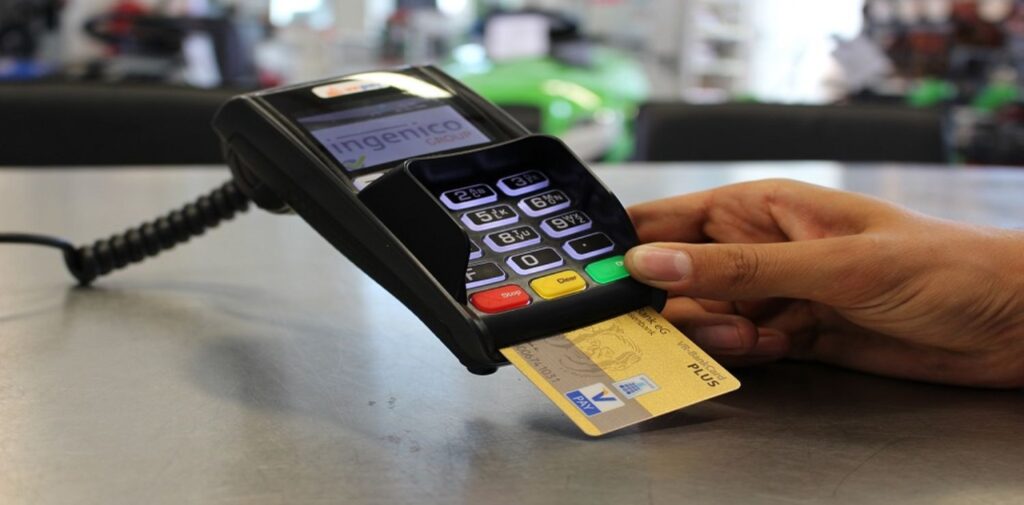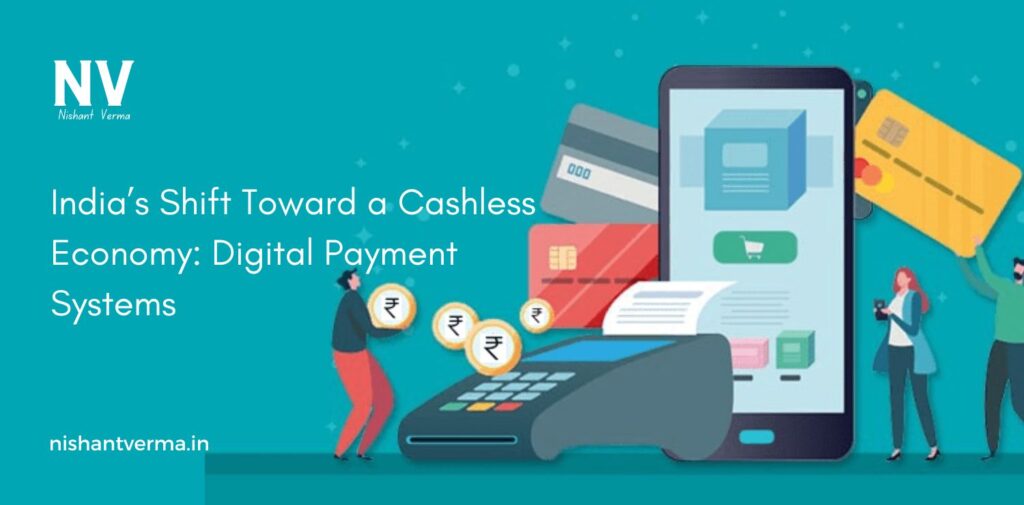In recent years, India has been on a path toward becoming a cashless economy, with digital payment systems playing a crucial role in this transformation. This shift, driven by technological advancements, government policies, and changing consumer behavior, aims to reduce the dependency on physical cash and promote digital financial transactions. The push for a cashless society is also seen as an effort to curb corruption, increase transparency, and foster financial inclusion. This article explores India’s shift toward a cashless economy, the growth of digital payment systems, and the benefits and challenges that come with it.
The Need for a Cashless Economy
India has long been a cash-dependent society, with a majority of transactions taking place through physical currency. However, as the country developed, it faced challenges related to cash management, such as the risks of counterfeit money, corruption, and the difficulty of tracking unaccounted transactions. The government began exploring ways to reduce these issues and increase financial transparency. One of the major steps in this direction was the demonetization move in 2016, which aimed to eliminate black money and encourage a move towards cashless transactions.
The shift toward a cashless economy also aimed at improving financial inclusion. A large section of India’s population, especially in rural areas, lacked access to formal banking services. By promoting digital payment systems, the government hoped to bring more people into the formal financial system, allowing them to enjoy the benefits of savings, loans, and insurance.

Growth of Digital Payment Systems in India
The introduction of digital payment systems has been a key factor in India’s move toward a cashless economy. Over the past few years, the country has witnessed significant growth in the use of mobile wallets, online banking, and UPI (Unified Payments Interface) as preferred methods of payment.
Mobile wallets such as Paytm, PhonePe, and Google Pay have seen exponential growth in India. These platforms allow users to make quick and easy payments using their smartphones, without the need for cash or cards. From paying utility bills and shopping online to transferring money to friends and family, mobile wallets have become an integral part of daily life for millions of Indians.
The introduction of the UPI platform by the National Payments Corporation of India (NPCI) has further revolutionized digital payments. UPI allows users to link multiple bank accounts to a single mobile application and transfer money instantly between bank accounts, without the need for a third-party platform. UPI’s success can be attributed to its simplicity, speed, and cost-effectiveness, making it an attractive option for consumers and businesses alike.
In addition to mobile wallets and UPI, online banking has also gained popularity in India. Many banks now offer digital banking services that allow customers to access their accounts, transfer money, and pay bills from the comfort of their homes. This digital shift has made banking services more accessible to people in remote areas who may have previously had limited access to traditional bank branches.
Government Initiatives to Promote Digital Payments
The Indian government has played a key role in driving the adoption of digital payment systems. Various initiatives have been introduced to encourage citizens to make the switch from cash to digital transactions. One of the most notable initiatives is the Pradhan Mantri Jan Dhan Yojana (PMJDY), which aims to provide every household in India with a bank account. This initiative has helped millions of people, particularly in rural areas, gain access to formal banking services and, in turn, digital payment systems.
The government has also launched the Digital India campaign, which aims to promote digital literacy and increase the availability of digital infrastructure across the country. Under this initiative, the government has worked to improve internet connectivity, especially in rural areas, to ensure that people have access to digital payment platforms.
In addition, the introduction of the Goods and Services Tax (GST) has also encouraged digital transactions. The GST system requires businesses to maintain digital records of their transactions, which has made it easier for the government to track and monitor payments. This has also incentivized businesses to adopt digital payment methods to maintain compliance with tax regulations.

Benefits of a Cashless Economy
A cashless economy offers several benefits, both for individuals and for the nation as a whole. For consumers, digital payments provide convenience, security, and accessibility. Transactions can be completed quickly, without the need to carry cash or visit a bank. Mobile wallets and UPI platforms also offer features such as cashback, discounts, and rewards, making digital payments more attractive to users.
For businesses, the shift to digital payments can lead to greater efficiency and reduced operational costs. With digital transactions, businesses no longer have to manage cash, which can be time-consuming and risky. Payments are processed quickly, reducing the chances of errors and fraud. Furthermore, digital payments provide businesses with a transparent and traceable record of all transactions, which can help them maintain accurate financial records and reduce the risk of tax evasion.
On a national level, a cashless economy can help reduce the circulation of black money and counterfeit currency. With digital payments, every transaction is recorded and can be tracked, making it more difficult for individuals and businesses to hide their financial activities. This promotes greater financial transparency and helps the government combat corruption.
A cashless economy also encourages financial inclusion. Digital payment systems allow people who previously had limited access to banking services to participate in the financial system. This is particularly important for people in rural and remote areas, where traditional banking infrastructure may be lacking. By providing access to digital payment platforms, people in these areas can now engage in economic activities, receive payments, and manage their finances more easily.
Challenges of Going Cashless
While the shift toward a cashless economy offers many benefits, it also presents certain challenges. One of the main obstacles is the lack of digital literacy, particularly among older people and those living in rural areas. Many people in India are still not familiar with how to use smartphones, mobile wallets, or online banking services. For these individuals, the transition to digital payments can be daunting.
Another challenge is the availability of reliable internet connectivity. Despite efforts to improve digital infrastructure, many rural areas in India still lack access to high-speed internet. Without a stable internet connection, it is difficult for people to rely on digital payment systems for their everyday transactions.
Moreover, while digital payments offer convenience, they also come with risks such as cyberattacks, fraud, and data breaches. As more people adopt digital payment methods, the need for strong cybersecurity measures becomes more critical. The government and private companies must work together to ensure that digital payment platforms are secure and that users’ personal and financial data is protected.
The reliance on smartphones and internet connectivity also poses a challenge for people who do not have access to these technologies. In India, a significant portion of the population, especially in rural areas, still does not own a smartphone or have access to the internet. This digital divide could leave some individuals excluded from the cashless economy.

The Future of India’s Cashless Economy
The shift toward a cashless economy in India is still a work in progress, but it is clear that digital payments are here to stay. The government’s continued efforts to promote digital literacy, improve infrastructure, and incentivize businesses and consumers to adopt digital payment systems are helping accelerate this transition.
In the future, India’s cashless economy is likely to grow even further, with more people and businesses embracing digital payments. The rise of technologies such as blockchain, artificial intelligence, and biometrics could make digital payments even more secure and efficient. Additionally, the growth of fintech companies, which offer innovative payment solutions, is expected to drive further adoption of digital transactions.
As digital payment systems become more accessible and secure, the cashless economy will create new opportunities for financial inclusion, economic growth, and transparency. However, it is important for the government and private sector to work together to address the challenges that still exist, such as digital literacy and internet connectivity, to ensure that no one is left behind in this digital transformation.
Conclusion
India’s journey toward a cashless economy has gained significant momentum in recent years, with digital payment systems playing a central role in this transformation. While the shift presents challenges, including issues related to digital literacy, infrastructure, and security, the benefits of a cashless economy are undeniable. A cashless economy promises greater convenience, financial inclusion, transparency, and economic growth. With continued efforts from the government, businesses, and individuals, India is well on its way to building a future where digital payments are the norm, and physical cash is no longer necessary for everyday transactions.




